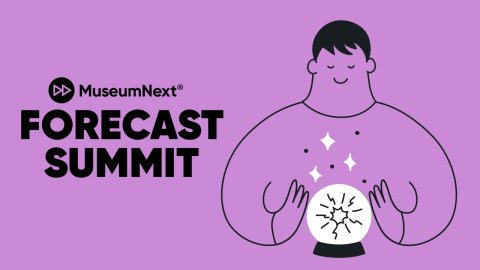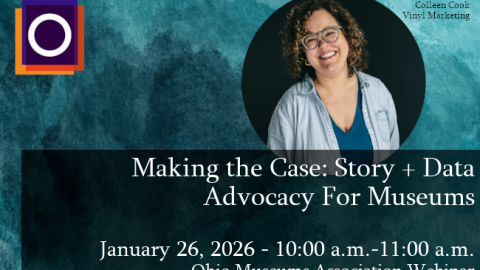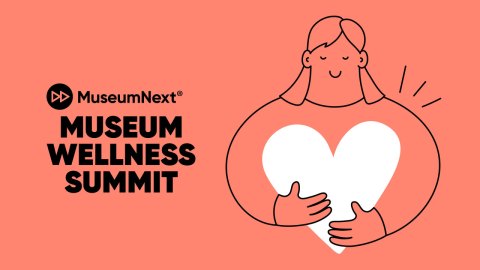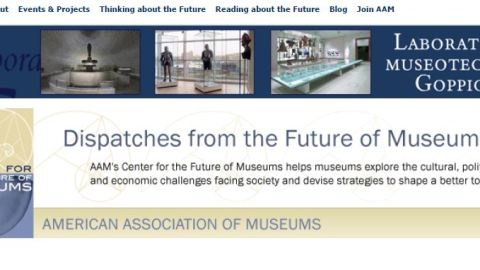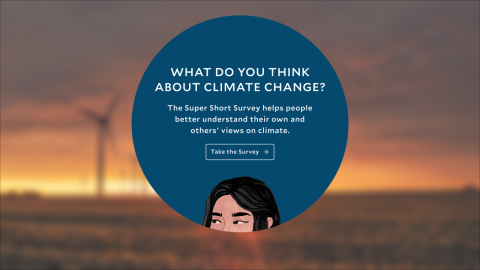
It’s been a few weeks since the world was upended in the wake of COVID-19. In this episode, we catch up with an old friend, Sharna Jackson, to hold space for some reflection, some mourning, and some laughter.
Never miss an episode! Subscribe to Museopunks on iTunes, Stitcher or Spotify
Guest
Sharna Jackson is the Artistic Director at Site Gallery in Sheffield, England. Site Gallery is a contemporary art space specialising in New Media, Moving Image and Performance. She was appointed in 2018 and prior to this worked at and with institutions like Tate, The Broad, Science Museum and the V&A. She is also a writer of children’s novels and non-fiction.
Presenting Sponsor
Museopunks is presented by the American Alliance of Museums.
Graphic Design of the Museopunks logo is by Selena Robleto.
Website: Museopunks.org
Twitter: @museopunks
Transcript
Suse Anderson: G’day and welcome to Museopunks the podcast for the progressive museum. My name is Suse Anderson.
Ed Rodley: And I’m Ed Rodley. And today we’re going to have a very different kind of episode.
Suse: We are. Normally we would come to you with a plan, a structure, order. All of the things that make great listening. And I’m not sure that’s what today’s path is going to take.
Ed: It’s certainly not going to. No, no. I can say that with complete certainty from the comfort of my bedroom where I’m sitting on the bed as we do this because the world is just a complete mess right now.
Suse: Yeah. It’s Wednesday, April 29, 2020, and we are recording this episode in the 7th week, I think, of social distancing for each of us.
Ed: Yep.
Suse: And, it’s a different world. We wanted to wait, initially, and see how things were starting to pan out. I was really hesitant about making an episode at the start of all of this, because there is so much change how could we possibly know, how could we possibly do something about the progressive museum without really thinking about the present circumstances of our sector and what’s happening. And while that’s still true, it also felt time to start giving a little bit of voice to the feelings, the experiences, the uncertainty. So, this episode is that.
Ed, how are you doing?
Ed: Yeah, I’m not crying for no reason today, so that’s good.
Suse: Yeah.
Ed: I was able to be pretty productive yesterday. Which was MondeSaturWednesTuesday, I think. I don’t know. Time has sort of stopped meaning anything.
Suse: Yeah
Ed: How are you doing, Suse?
Suse: Doing pretty well. Feeling a little rushed and exhausted. It’s the end of semester and that’s always a tiring and emotional time. But it feels doubly so when I think about the professional world my students who are graduating are soon to inherit. And, yeah, I find that’s a pretty… I’m not being able to distance myself from that fear, and that worry, and that emotion very easily. And, understandably and nor should I. I think, as an educator, I have a responsibility to my students and that’s in all kinds of ways.
But, you know, on a day to day level this week is going okay. And, I will work with that. Okay is fine.
Ed: I was just looking through my notebook the other day, in my monthly planner where I would be, in olden times, I would be writing down things that I would hope would happen in the month of March. All it says is “survive, keep family alive, hopefully keep job.”
Suse: Yep. That feels good.
Ed: Okay, check. Woohoo.
Suse: Alright, well let’s bring in our guest. We’ve got the wonderful Sharna Jackson to speak with us. And really there’s no great meaning why we just chose Sharna she’s on the other side of the world, she’s in a different situation, and we just thought it would be nice to have a chat.
Ed: And, she’s awesome.
Suse: Oh, also that.
Sharna Jackson is the artistic director at Site Gallery, in Sheffield, England. Site Gallery is a contemporary art space specializing in new media, moving image and performance. She was appointed in 2018 and prior to this worked at and with institutions like Tate, the Broad, Science Museum, and the V & A. She’s also a writer of children’s novels and nonfiction. Sharna, welcome to Museopunks.
Sharna Jackson: Thank you so much. I love your show so I’m very excited to be on here, again.
Suse: I know we were just having that moment of this is actually repeat for you.
Sharna: Yeah, blessing.
Suse: It’s really exciting. No, I’m going to do something that I don’t normally do. We usually like to pretend that the show just happens magically and there is no time and date, but I actually think that’s it’s really important that we talk about the time and date when we have this conversation today. It is the 29th of April, it’s the end of April just about and it is noon here in the U.S. and it’s 5 o’clock in the UK?
Sharna: Seven past 5.
Suse: And I think the reason I wanted to do that; is I think it is important. We’re in an incredibly volatile situation. Where so much is changing, and what we say one day might not resonate the next. So, I thought it was really important that we give a date stamp to this. As we kick off, can you just tell us where you are? Who else you’re sharing a space with? What the world looks like for you right now?
Sharna: Absolutely, so I’m currently in a rented house in the city of Sheffield where Site Gallery is based. Houses in Sheffield are quite particular, they have many floors and are quite cheap to rent so it’s great. I live with my son and his dad and we all have a separate room which is very nice. So, I’m in my room which is at the top of the house, and it’s a complete state. I’ve just been pretty much living in here for three weeks. I’m glad there is no cameras in this podcast.
Suse: I know the feeling.
Ed: So, Suse, where are you right now?
Suse: I am sitting on the floor of my daughter’s room. There’s a very good chance we might actually hear a toddler in the background during this today. I always used to record Museopunks from this exact spot because the internet was better and the sound was better and then gradually I had moved my way downstairs when I was recording and she wasn’t home but it turns out that she is home. This is a pretty small room, currently it’s where my husband is now working so we’ve moved his entire office into my daughter’s tiny room so that has helped exacerbate the end of nap time. These are some of the changes that we’re working with. We basically have centralized all work and theoretically a toddler sleeping into one space. The rest of the house is more free reign space. But, it’s a pretty small space.
Ed: Yeah, yeah. My version of that is in our apartment, at the moment, let’s see, I am perched on the bed in our bedroom with the door closed. While my wife is in the study on the big computer doing a video conference, and my son, who is a senior in college, who got sent home, is cooped up in his him. I think he’s taking a test right now, so hopefully the internet will survive all three of us doing streaming stuff at the same time.
But, what a strange time. What a strange time.
Sharna: It is such a strange time. And, these things that you need to think about, the capacity of streaming and all of that. So, I’m tethering to my phone just in case cause I know my son is downstairs playing GTA with his friends and it will never stand up to it. And, Suse you talk about your daughter in the background, that’s just so normal these days and I kind of like that.
I kind of love that family is part of work. There’s less of a barrier that you put up. You’re whole house is behind you in these daily Zoom calls that we’re doing and everybody’s privy to your home life. Which is such an interesting thing to me.
Yeah, of course there’s privacy issues. But for me and my team we’re finding it quite comforting to see that other side of our colleagues.
Ed: Yeah, it’s interesting. I think I’ve seen more kids and cats in the last seven weeks than I’ve seen in probably the previous thirty years. And that sense of we are in each others homes now. Is really kind of interesting.
So, Sharna, one thing that I’ve noticed in my own stay-at-homeness which I’m now in week seven of, is my days are very hard to separate when I look back over what has happened during quarantine. Can you tell us a little bit about what are your days like now in Sheffield and how is it different than it was in the before times?
Sharna: Well, the hours and the days seem to blend into one, absolutely. And, we’re trying to, with the gallery, we’re trying to maintain a semblance of a working day. We’ve always been a gallery that enables our team and our staff to work flexibly, remotely. So, that’s not entirely new to us. But everybody being out of the space is new. Taking from the start-up world, we have a daily stand up, and that’s at eleven every morning. And we catch up with each other for about a half an hour going around the screen asking what everybody’s up to that day. If there are any immediate blockers that we can resolve. And that’s quite nice to check in.
We were really earnest seven weeks ago when we first started, we had a three pm water cooler tea Zoom, but increasingly we’re experiencing Zoom fatique. And I don’t think, yeah, I’m sure you understand it. I think we’ve decided that our limit is three Zooms a day. We’re finding them exhausting because there’s the lag and you’re trying to read body language and hear the voice and it’s just very different. We’re pacing ourselves a bit there.
These Zooms at eleven we’re having. The majority of the meetings I had scheduled have taken place online or via a phone call. Which is more efficient, actually. And that’s been good but people are starting work at six in the morning and finishing at two. I will start at around ten fifty-five and then carry on until midnight doing an hour here an hour there. But we’re making it work. We’re using Slack to chat, and we have a What’s App for social. So, for us new media and technology is inherent to our work and the artists that we work with, so I think for us its been an easier transition. In some ways.
Ed: Yeah, so that’s interesting. Were you using both Slack and What’s App before?
Sharna: We’ve used What’s App perhaps too much. And some people who were part-time were like, “I can’t really mute this.” We had a Slack set up when I joined in 2018, but it fell to the wayside, it fell away. But we’ve now reinvigorated it. Everybody’s on there now. We’re finding that really great. Our volunteers are also on an adjacent Slack so we’re able to communicate with them as well via those means.
Ed: Nice, nice. I know a lot of places have, in hindsight decided “Oh, we should be using more of these digital communication channels,” but that’s very hard to stand up once everyone has already left the buildings.
Sharna: Absolutely.
Ed: Congratulations.
Sharna: Thank you. People are having to learn a lot of new skills very quickly. And, it’s important for me that I don’t overwhelm my team with new things at this moment in time. I’m lucky we had Slack running in the background the entire time.
Ed: Cool. What is the conversation like in the UK cultural heritage sector these days?
Sharna: It’s really tough. The Arts Council of England have been really, really great. As have some of the big funders here. They’ve been very quick to pull together emergency funding responses. Arts Council here is the main funder of art and art institutions here in the UK. They quickly created a fund for individual artists and collectives to obtain some money. Then there was a fund for smaller organizations who are outside of what they call their NPO program, which is the National Portfolio Organization, that’s organizations who are funded on a four year rolling basis, of which we are one. And now, just last week, they’ve released the plans for NPO’s, as well. They’ve really staggered their approach to funding and made it really fair for those who are currently most in need and are really rapidly giving out that money.
Similarly, the government, having the furloughing scheme where they are paying 80% of a monthly wage and it is up to the business to top it up to the other 20%, if you’re able to. That is something that we are investigating, internally. Working out whether that’s feasible for us to do. Again, because we’re a contemporary art space that focuses on new media we have some understanding of what the type of things we can do are. It’s not a quick conversation, to just say all the curators are furloughed and all the education staff are furloughed, which I just couldn’t do. I’m seeing reports about the US lots of educators losing their work at the moment. Which is terrible! Absolutely disgusting.
We’re a really small team. There are 9 of us. People think we’re bigger than we are. Which is always a dangerous place to exist.
We are looking at our reserves, looking at furloughing, really thinking of ways we can save as much money as we can now because nobody knows how long this is going to last and whether when we reopen there’s going to be an appetite for what we do.
In terms of our programming, we just opened an exhibition. Our exhibitions last three months at the gallery. We’re extending that show until the end of the year, hoping that we can go back into the gallery sometime in September. But, again we just don’t know.
Ed: Nobody knows anything. That’s sort of the interesting thing. There are so many balls in the air.
Sharna: Nobody knows everything and it’s happening to everybody at once. Kind of gives me some comfort. It’s not just a Sharna thing, or an England thing, or a Sheffield thing but we’re all in it together and working it out, I guess, as a sector. It’s everybody really doing their best to pull together.
I’m trying to be very positive!
Suse: Sharna, I think that the situation in the UK is obviously different than the one in the US. What have you learned about yourself or your organization, in this time, that maybe you hadn’t expected?
Sharna: That’s a really good question. My team are so great. And they really are great. And how quick they’ve been to offer ideas and suggestions and we started putting some content online and they’ve just, “I can host a reading group online…”, “I’m going to run workshops for kids online…,” “I’m gonna think about safety…”, “I’m gonna do this, do this.”
The ability to deliver, even though it’s such a stressful time, it’s been really impressive. For me, I’ve found out, that I really need to take some breaks. I find it quite overwhelming sometimes.
I remember, it must be two weeks ago or maybe a day ago, who knows, but I was in the morning Zoom and I just started crying. I was just “I’m sick of this!”, “There’s not enough PPE.” And “I feel sick…” And it was really, I don’t know. I’m not saying it’s healthy and great to be crying around your team all the time, but we feel like a real family and we’re trying to pull it together and be there for our audiences. Trying to give them something to do and be interesting during this time. Without overwhelming them and just being a content dump.
Suse: It’s really interesting hearing you say that. For the last couple of years I’ve been trying really deliberately in the classroom to think about how I bring emotion and vulnerability into the classroom. I think it’s really helpful for me to think about my students as whole people and for them to think about me as a whole person. Doing that over time, I’ve had students find that quite unnerving, but it’s also been an interesting experiment to do. I think it can sometimes help people be a lot more open.
I’m suddenly seeing a lot of people forced into this state of vulnerability where they have to say, “No, I can’t do that. My child won’t let that happen.” Or, “everything’s just got on top of me.”
I find that its very interesting because it’s humanizing people in very different ways. It’s not the clear delineations of this is my professional self and my home self. Which I think is what we were getting at before.
But that also contributes to some of that burnout, I think, there are ways that you can say, well I can be just on at work or I can be just relaxed at home or whatever that is, whatever is happening in your life, there’s often been these ways to delineate these different spaces. And, I think, that that’s just gone now.
We think back to early ideas of the internet and social media and context collapse. We’re living through a massive context collapse but in a very visceral way.
Sharna: Oh, yeah, I completely agree with you. I used to work at startups after I left Tate I had a little stint doing digital things. And, that kind of attitude where, you are always on. I think there’s still some of that in me which kind of makes it comforting but yet, while being runborn, I did not apologize for crying, because there’s nothing to apologize for and we’re very open and that’s fine. But, yet making sure that everybody has a break as well. And trying to define what a break is. And “Oh, I don’t need to take any annual leave cause I’m at home.” It’s like no you can still try and shut the computer you can go and read a book or go in the garden and look at the bees as they go past you. Look at the beauty in the small moments. That sounds like a really hippy and a trite thing to say but really spending time outside if you can safely. Taking the best from the small moments, I suppose, is something I’m trying to push.
Ed: Yeah, and that’s so important. So, Suse, what have you learned about yourself in the last seven weeks or so?
Suse: Oh, gosh, I’m meant to ask questions, I’m not meant to answer questions.
Ed: I know.
Suse: The last seven weeks I have been less connected to the internet than anytime in the past ten to fifteen years.
Ed: Really?
Suse: And, part of that’s been deliberate. Part of that has been a way of trying to keep my world be a little bit smaller. And part of it has not been deliberate it’s just been coping with a toddler and trying to parent and get my work done. And that just doesn’t leave time for the vagaries of spending time on the internet.
And that’s been really interesting. And I’ve also found it incredibly hard for me. I’ve been very focused on the world inside my house to the point that I’ve found it very hard to even do things like, you know there’s all the professional Zooms and all of those sorts of things, and even personal ones. I’ve found it very challenging to do anything like that because I felt almost a need to just focus in rather than looking out. I think it’s the first time in as long as I can remember that I’ve done that at all. Because even when I was doing my my PHD which I think prepared me for quiet and solitude in different ways, there was always a looking out and seeing what was happening beyond and I have been doing a lot less of that.
Ed, what’s your experience and learning?
Ed: I knew this was going to happen if I asked you the question. You were going to turn around and ask it of me as well.
I know, I couldn’t resist though.
What have I learned about myself, gosh. Well, I’ve learned three things, I think. One, this need for us to treat each other like human beings and not professionals is long overdue. One of the things I started doing very early on was start compiling lists of people that I knew I would never see for a long time now and reaching out and saying – “hey, let’s talk on the phone, let’s have a chat” – and at least half of those chats would inevitably get to the point of – “so how’s it going?”, well you know somedays I cry, some days I’m functional, some days I stare at my computer and can’t seem to get anything done – over and over and over again. Just the importance of having that human contact and reaching out to people not to talk about, “okay, those deliverables of yours, you’re gonna get them done on time right and we’re gonna have that stuff up on the website tomorrow…?” has become super important it seems like. For me it is a lifeline to have those one on one connections with people where my physical world has collapsed to everybody’s whose in my house and occasionally to people I will see at the supermarket behind their masks. You can’t really see people with masks on the same way you’re used to. Are you smiling, are you frowning? I don’t know.
Suse: And I don’t think people look the same way either.
Sharna: No they don’t.
Ed: I’m amazed at how much people look away.
Suse: Yeah, avoiding eye contact.
Ed: Yeah, it’s weird. So, there’s that. I have found out that I am one of those people who will suddenly be overcome by waves of despair at seemingly random times. Who knows what’s going to trigger it. You’ll just be sitting there at your computer on a Zoom call and suddenly the hopelessness of it all will just wash over me. Okay, I’m gonna put myself on mute and turn my camera off for a while and wait for it to pass. That is not somebody I ever thought I was and it turns out, I am.
So, that’s been interesting.
Suse: Yeah, it’s an interesting thing. I mean, I’m sure there’s a lot of people who are trying to put off those emotions, but I think these emotions are so present for so many people that there really is just having to experience these uncomfortable emotional states.
Sharna: I agree.
Suse: And for long periods of time. I certainly couldn’t do that a couple of years ago. It’s something I’ve been working on pretty deliberately and glad I have because I just don’t know how I would be in this moment without being able to grieve and being able to cry. It’s really hard.
Sharna: It’s really hard, but it’s really important. I think you’re completely right; you need the space to feel. Just to feel what’s going on and just to be. And, what was quite frustrating in the early days of the pandemic was this whole rush to – well you know “Shakespeare wrote King Lear during a pandemic so what are you doing?” And it’s like, leave me alone!
I was on a radio the other day and they were like, “Yeah, is this like the best writers retreat you could ever wish for?” And it was like, no people are dying. It’s not fun. It’s not relaxing. It’s like, what do you mean? And then that soured the entire conversation. But yeah, this is not normal.
Suse: Yeah.
Ed: Yep. So not normal, the one thing I have found myself having to do over and over again is give people slack in ways that I never did before. I guess I’m a much more judgmental person than I thought I was but just remembering everybody is cooped up at home and they’re trying with hardware and infrastructure and skills that were not designed for this situation and somehow they’re still getting something done. Even if it might not be what you want them to get done and for God sake just cut some slack to everybody. I remind myself constantly.
Sharna: Yeah, absolutely.
Suse: Sharna, what questions has this experience created for you about museums, about the field, about the arts more broadly? What are you thinking about as we move forward?
Sharna: Well, it’s quite interesting because, the three of us have worked in digital museums for a long time and thinking about this as a catalyst to the digital strategies that organizations said they were going to do.
And it’s been interesting to see those happen. I get why this was the kick, but why couldn’t some of this have been happening before? Because there are audiences who did have this kind of existence before the pandemic that you could have been reaching out to. Its quite interesting from that perspective.
Thinking a lot about the artists that we work with or residencies with us what implication does this have for their practice. What does it mean for a gallery that’s, we’re a local gallery in the center of Sheffield, what does that mean when now we can host workshops internationally and international attendees can come. What do we gain? And, what do we lose? Or, is that a ridiculous question?
And then trying to think about funding. What does the funding landscape look like? How am I going to keep the gallery running? In the next four years are the arts council looking at us in this period and evaluating what we did and is that going to have an implication on whether they accept our applications in the future. How can I be more accessible in the content that we are delivering now? How do I protect my presenters in Zoom if people are hacking in and being racist and all of these questions…constant, constant, constant. But the main ones for me are:
Funding for the gallery, but also what is a digital strategy? What is the role of the digital person in a museum now? Are they listened to now? Is there more respect? Is it understanding? What’s happening there? That’s really interesting to me.
Ed: Yeah, it’ll be interesting to see how that plays out and once people start going back into their buildings, will it all try pretend it didn’t happen and go back to the way it was before? Will it be some completely changed reality as a result of that?
I have no idea.
Suse: I don’t think there can be a pretense that it hasn’t happened because at least in the U.S. it’s going to be happening for so much time now. I mean, I think the funding question is significant.
There’s also, will people come to museums? Is the model of the blockbuster dead? And, if the model of the blockbuster is dead, if we have to do social distancing, then we can’t use visitation as a measurement of success and impact. Well, then how do you start to measure success and impact?
I think this will have some kind of impact on every part of the museum. The thing I’m thinking about, as someone who works with grad students, my students had their last class yesterday, and how do they go into this sector right now where there’s hiring freezes but such uncertainty? Of course, so many now people are losing their jobs, who are furloughed. There’s the human factor, and the volatility of that. I’m sure we’re gonna lose people from the sector, who just say well I can’t keep doing this. Or, there is no job here.
There are going to be temporary things that probably look close to normal in a relatively quicker sense but I think this has to change some aspect of so much of the work that we do.
Ed: I would agree. Do you remember, Suse, months ago we had a conversation with Jay Rounds where he was talking about paradigmatic shifts and how you can’t see them coming. Well, I think we can see this one.
Sharna: I agree, it can’t go back. It’d be impossible. But, how is it maintained?
There was always for me that tension between other teams in the museum and the digital teams and those internal hierarchies and now I wonder if this will bring those teams together a bit more.
I’ve been out of museums for a little while but I’m hoping it’s changed.
Ed: I hope so too, Sharna, for your sake.
Suse: I don’t know. I think the thing is, I don’t know. This episode took us a little bit longer to make than we normally do, we normally try and get something out every month. And, Ed and I were talking and I just said I don’t know how we do something focused on progressive practice right now when we’ve got to have time to be in this moment.
There will be changes, and part of it is how we participate in making those changes. And how, there’s all of these to come but there also needs to be space for emotions and space for grieving and space for not knowing. Because when its such a volatile and uncertain situation. When people are being affected so personally in so many ways we can’t just talk about…There are practical conversations to be had but there’s also other conversations that we need space for. I don’t know how else we have them without giving that space.
I’m not being as eloquent as I would like to pretend I normally am and when I have things written down in front of me and ideas of where we’re going with an interview. This is me just thinking through this out loud.
Ed: But luckily we’re cutting you a lot of slack because these are strange times.
Suse: Right!
Ed: One of the things that I’m always amazed by in this particular pandemic is how quiet and peaceful and completely grim it is all at the same time. The sun is shining, the streets (I live right in the middle of the city) and it’s dead quiet, in a way that it has never been in my entire life. I was watching a wild turkey strolling up Cambridge Street the other day because nobody’s out.
We take long walks every day. Everybody seems to be cooking enormously complicated meals because you’re home all day, you’ve got plenty of time, you’re not doing anything else. And, at the same time The Boston Globe obituary section was 19 pages long on Sunday.
Suse: Oh, my gosh!
Ed: What? It’s crazy.
Sharna: It’s so crazy. There was a tweet from Danny the other day, Danny Berchall, which was “I’m currently the most busy and connected I’ve ever been but the most lonely.” And I was like, okay, yeah.
Ed: I feel that.
Sharna: Yeah, I get that.
Ed: So Sharna, here’s a question for you. I think I know where the answer might lead. But, what things are bringing you joy at the moment? How are you finding little moments of happiness?
Sharna: Well, I’m doing cooking. Like everybody else. “Ooh, look at me, I can cook.” So, I’ve eaten ready meals and Ubered McDonald’s, I’m actually feeding my kid properly.
I’ve got this boat, that I love. So, I’ve been thinking a lot aobut the boat. And, how I can get back there one day. Being on Pinterest and imagining the roof I’m going to put on, and ordering paint samples and doing nothing with them. Weird things like that.
Spending a lot of time on Now TV, it’s like an English Netflix and watching things I haven’t had the chance to.
I did a jigsaw with my kid last night. Which was really nice! Things like that. There are things that I do appreciate and that I will hold on to in this horrible time. And it’s those little moments that are nice.
Ed: Somehow, we’ve turned into a competitive crossword puzzle family. My kids are college age and older. Trying to decipher the puns in the New York Times crosswords can be a real bloodsport. To see who can do it first. But we can pass hours that way just laughing and smack talking each other. It’s really interesting.
Sharna: That’s really nice.
Ed: What about you, Suse.
Suse: I was saying before that I’m the most off-line I think I’ve ever been or certainly as an adult.
I’m effectively parenting my toddler through the day while my husband has his job, his job is much more time precious than mine is. So, I work in the night and I parent through the day. Because we live in a small house and until now, we have never invested in many toys, we have a few more now not that many more, I’m becoming a much more creative parent. You mentioned Pinterest, I feel like I’ve been doing my first, not actually Pinterest worthy they’re actually quite ugly, but I’ve become a much more creative parent than I was and that’s been really lovely.
We’ve been making trucks out of cardboard boxes. We’ve been making a fake beach out of bath towels and toys and beach balls. I was never a particularly, I’m not a physically creative person in most sense, there are people who are crafty and I am not a particularly crafty person, but one of the things that’s nice with a toddler is the quality doesn’t have to be great it just has to spur imagination. It’s helping me be a more imaginative parent. That’s how I’m finding joy in this moment.
Ed: Now that is an excellent way to find joy.
Suse: Sharna, we’re going to let you go in one second but is there anything else that as you’re thinking about the sector as you think about the ways you’d like it to change moving forward. Do you have a sense of one thing that you’d like to come out of this awful and disruptive time and continue? Whether its professionally or personally or both.
Sharna: I’m hoping for increased empathy. I think we’ve seen each other at our best and our worst and I’m hoping the empathy that we’re showing to each other, particularly our colleagues, can be maintained.
In terms of the way office life works, I’m hoping there is more flexibility for people who, some people don’t want to come back to work in the traditional sense. And I don’t blame them. I hope there’s support for different ways of working and for space to think. I think that space to think has dropped off so many people’s radars. Deliverable, deliverable, deliverable, target, target, KPI, deliverable…thinking and feeling is protected. I’m hoping for that.
This is the new normal. I hope that we can navigate it empathetically together.
Ed: That’s lovely.
Suse: That’s really beautiful. Sharna, thank you so much for joining us for this conversation at this strange time for a repeat visit on Museopunks. Several years after the first one.
Sharna: Thank you so much. This is so fun. Its really great to talk to you both again.
Ed: It was good to hear your voice.
Suse: It’s so lovely to speak with you.
Okay, well Sharna, thank you so much for joining us on Museopunks. Ed?
Ed: Suse.
Suse: What do we say at this point? I guess what we say is …
Ed: I think we can say the usual things.
Suse: Yeah. Can you define the usual things?
Ed: I think its something along the lines of Museopunks is brought to you by the American Alliance of Museums. You can find us on a number of different podcast platforms including…
Suse: We’re on SoundCloud, Stitcher, and Spotify, really anywhere that begins with S. And, I’m sure some of the others, but they’re the big ones.
Ed: Stay tuned for next month’s episode that will be coming out as soon as we can figure out what’s its going to be.
Suse: And find ways to find time to make it around working and parenting and just trying to be people in this crazy world and in this crazy time.
Ed: Till next time stay safe, be strong. Be in it for the long haul.
Suse: Yeah, or you know, just survive.
Ed: Yeah.
Suse: As we head out of this show we’re going to take a listen to a wonderful piece that was sent in to us. I think it sums up the moment nicely, as well.
“Coronavirus has made me feel human. I have had quite a couple of weeks. Many people in my family were affected and at the same time I was dealing with all kinds of stuff at work. Everything was changing and everything was hard and everything felt in flux. The one thing I kept thinking is…I kept looking at the moon and seeing the full moon, supermoon, and thinking we’re all here on this planet together. We’re all dealing with this together. And, in terms of museums, it might be the first time ever I’ve felt like museums were part of community in such powerful ways.
I was one of the people leading our closure and when we decided and I had a full team who agreed, felt like I was part of something really important for humanity. And every step that we take, as a field, including losing so many jobs and the incredible uncertainty of the future its another step that we take to be with all the other industries. And after about 20 years of a career where I always felt sort of out of step, sometimes, with the rest of the industries, it’s very interesting to see how human every person who works in museums is. How we’re all sitting at home working, we’re in the same boat as our visitors for the first time, perhaps, ever. All the time, every day.
For me, there’s something so wonderful about finally being with the people, for the people, all the people, all the time in a way that I had always espoused in my career but not something that happened universally. And now everybody, directors are sitting home just like visitors trying to figure out what the future will hold. And frankly, not a human on this planet knows. We’re all in the same boat. With all the horrible and terrible, I’m really hopeful that we also have the human and the good and the wonderful in our future.”

